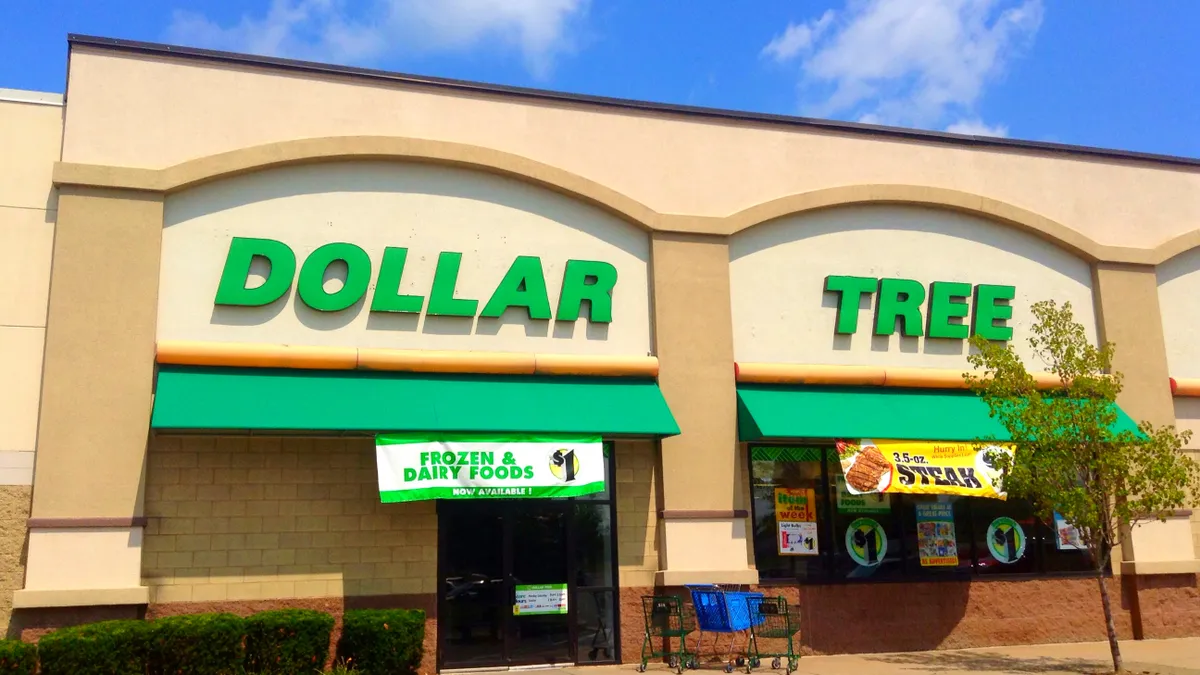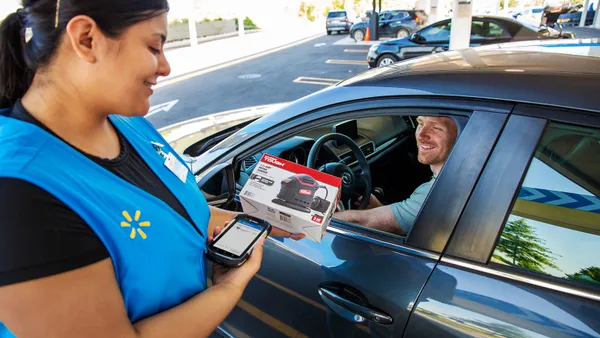The relatively small fleet of stores run by 99 Cents Only Stores was a major factor in its downfall, due to the importance of high volume and economies of scale in value-oriented retail, GlobalData Managing Director Neil Saunders told Retail Dive earlier this year. The discounter runs about 370 locations across Texas, California, Nevada and Arizona.
Nevertheless, its decision to file for Chapter 11 bankruptcy protection and liquidate opens up an opportunity for other discounters, and rival Dollar Tree stands to gain the most, according to research from Earnest Analytics and Jefferies analysts led by Corey Tarlowe.
“Looking ahead, we believe there is a robust market share gaining opportunity,” Tarlowe said.
Both firms found considerable overlap between these two dollar stores. More than 77% of 99 Cents Only customers also shopped at Dollar Tree in the past 12 months, for example, according to Earnest credit card data.
Moreover, nearly all (99%) of 99 Cents Only stores have a Dollar Tree within 5 miles and more than half (57%) are within one mile. By contrast, 60% of 99 Cents Only stores are within five miles of a Family Dollar, 75% are the same distance from a Five Below store and 49% are that close to a Dollar General store, according to a Jefferies real estate analysis.
Five Below, Dollar General and Big Lots do all share more than a quarter of 99 Cents Only’s customers and also stand to gain, according to the Earnest data.
There’s also overlap in the customer profiles of Family Dollar, Dollar General and 99 Cents Only, according to Jefferies. Specifically, 37% of 99 Cents Only customers make $40,000 per year or less, compared to 44% at Family Dollar and 35% at Dollar General.
Dollar General’s expansion plans could boost its share opportunity. The discounter, which already runs some 20,000 stores, plans to open 800 stores this year alone. Jefferies analysts speculate that many of those new locations are likely to be in the West, where Dollar General is “relatively underpenetrated,” and where 99 Cents Only predominates.
At the moment, though, Dollar Tree “is by far the highest overlapping retailer with 99 Cent Only Store, suggesting it could stand to gain the most customers in Southern California and Texas,” the Earnest researchers said.
The discount retailer least likely to see benefit from the disappearance of 99 Cents Only is Five Below. That’s partly due to customer differences: Nearly 40% of Five Below customers make more than $100,000 annually, compared to just over a quarter of 99 Cents Only customers, Jefferies found. Five Below also has the least geographical overlap, with just over half of its stores found within a five-mile radius of a 99 Cents Only location.

















